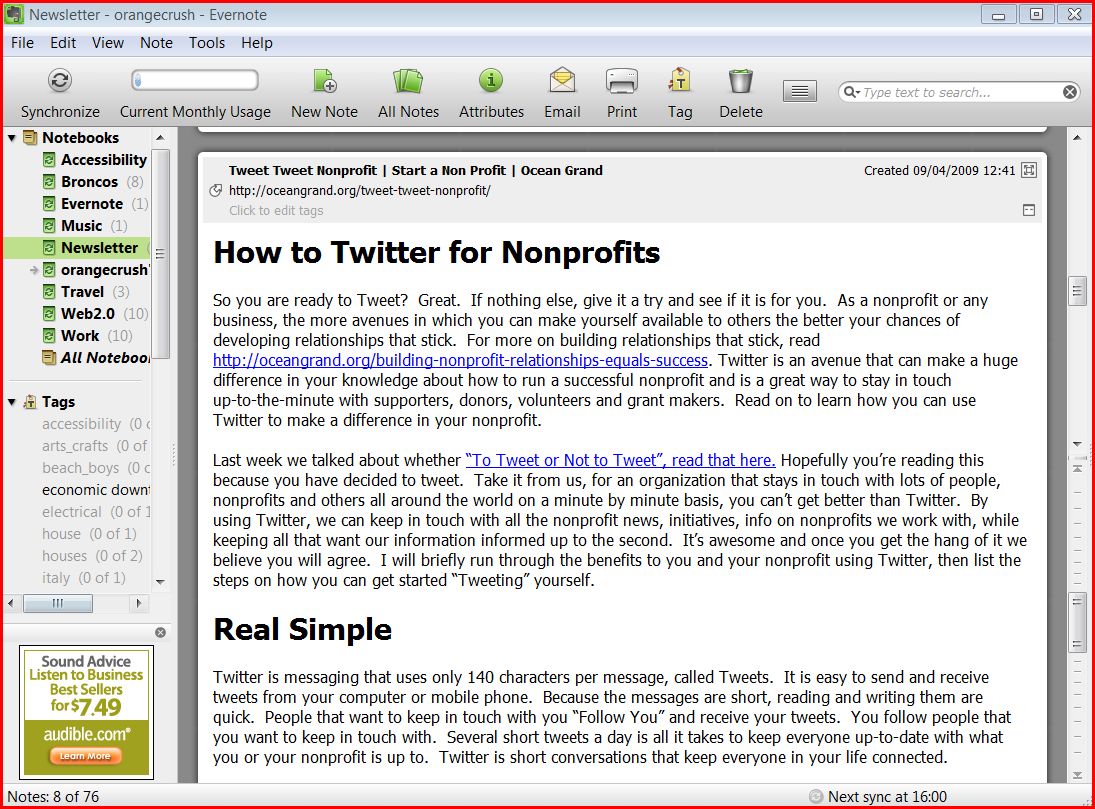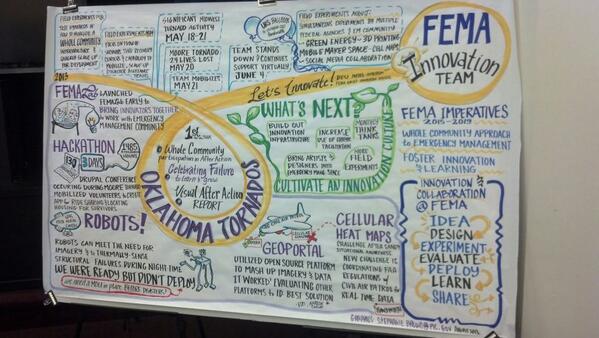I am usually very excited when new tools disaster tools come out on the market. But I am equally excited when everyday tools can be applied to the disaster context to better meet our needs and more often than not achieve significant cost savings.
In the past year, I have used Evernote religiously to capture my thoughts, research and any other type of information I can think of. I can then search Evernote with its powerful search features to inform my blog posts, support my PhD research and consulting clients, manage class assignments, and take notes...for everything.
Evernote has an easy capture tool for clipping things from the web (including PDFs) and an easy to use architecture that can easily link and/or publish notes within the program. Additionally, I can use it on ANY of my devices with online and offline capabilities and integrate it with MANY other applications. Needless to say, I am a big fan of the tool.

But I really wonder if Evernote can be used as an emergency response or continuity planning tool. According to Wikipedia:
Evernote is a suite of software and services designed for notetaking and archiving. A "note" can be a piece of formatted text, a full webpage or webpage excerpt, a photograph, a voice memo, or a handwritten "ink" note. Notes can also have file attachments. Notes can be sorted into folders, then tagged, annotated, edited, given comments, searched and exported as part of a notebook.
To put this a bit into perspective, Evernote 's motto is:
Remember everything. Capture anything. Access anywhere. Find things fast.
Hmmm....sounds a lot like a lot of our fundamental planning needs for disasters? We need to collaborate well and then access our information easily and fast. Evernote Business provides many of the collaboration features missing in the consumer product.
The incorrect approach, though, would be to ask Evernote to do everything our word processor does. Conceptually, it is an entirely different tool that must be approached in a new way.
For example, what if we could have each note represent a chapter and all linked back to a Table of Contents note? What if we could create a notebook solely for our base plans and then have other notebooks dedicated to our functional annexes? Add supplementary or supporting PDF, Word, PowerPoint, Excel Documents with ease?

In another case, what if your incident commander could easily look up and reference relevant procedures and protocols directly on his or her phone or tablet? Better yet, can it provide a checklist for action within seconds?

Or what if you could get real time information back from the field by having them taking pictures, record audio or mark up a screen shot of a map directly from their phones and tablets?

Evernote is such a powerful repository of information that it can do all the things mentioned above. I am just wondering what the workflow is for organizations with emergency response and business continuity planning needs. Does it end up being more expensive than other tools or are there any work arounds?
What are your thoughts? Would you consider Evernote for your organization? Why or why not?
![[APPLY NOW] Coaching for Tech-Enabled Disaster Management Projects](https://images.squarespace-cdn.com/content/v1/53a9cfb7e4b0ac3522f6060f/1462307316457-N9ZM2TH3LHKFOYKLQNP6/2dd6f5943b745302.png)


![[APPLY NOW] Free Incubator for Disaster and Humanitarian Innovation!](https://images.squarespace-cdn.com/content/v1/53a9cfb7e4b0ac3522f6060f/1426791029598-AMKYXV4HKFNIO9XYLJ2P/image-asset.jpeg)





